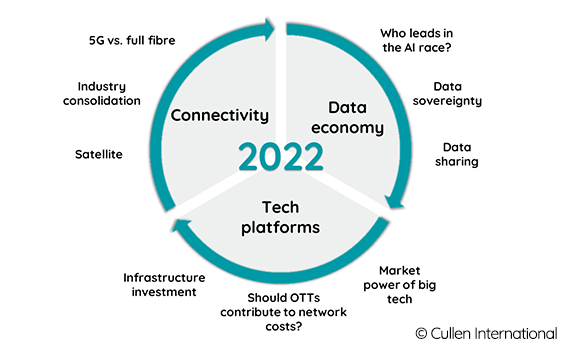The year 2022 has started as another COVID-19 year.
However, in 2022 the pandemic might have a lower impact on economies and societies compared with the two previous years. There are also some important lessons learned from COVID-19.
For example, digital services offered concrete solutions to deal with social distancing measures. The pandemic proved that modern digital infrastructure availability and affordability could make the difference for societies in any part of the world. Public and private sector resources were used to address some of the most compelling connectivity challenges.
Going towards a post-pandemic era, governments, industry and societies around the world can however still expect several challenges and opportunities. The main trends identified in the digital sectors are briefly discussed in this report across the three pillars of the Global Trends service: connectivity, tech platforms, and the data economy.

For more information and to request the full report, please click on “Access the full content” - or on “Request Access”, in case you are not subscribed to our Global Trends service.
more news
10 December 25
Recent initiatives to protect copyrighted works from unlicensed use in training AI models in the Americas
Our new benchmark compares new initiatives across the Americas that address the impact of artificial intelligence (AI) training on the creative sector, particularly regarding the use of copyright-protected works.
09 December 25
Initiatives to protect the creative sector from the unlawful exploitation of copyrighted works by AI systems in Europe
Our new European benchmark shows national debates on the impact of artificial intelligence on the creative sector, particularly regarding the use of copyright protected works to train generative AI systems.
01 December 25
Lithuanian regulator plans local regulatory holidays in the wholesale local access market
FREE download for ALL of our latest analysis!